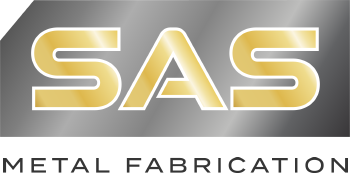Laser Cutting Sheet Metal
We use state of the art fibre laser cutting technology with all types of sheet metal, combined with a determination to succeed enables us to give our customers a highly competitive advantage. We provide a fully automated loading and laser cutting service for 24/7 production.
- WORKING RANGE: 3000mm x 1500mm
- LASER POWER: 3KW
- MILD STEEL: Up to 20mm THICK
- STAINLESS STEEL: Up to 12mm THICK
- ALUMINIUM: Up to 10mm THICK
- BRASS/COPPER: Up to 6mm THICK
Laser cutting machines can accurately produce complex exterior contours. The laser beam is typically 0.15 mm (0.006 in) diameter at the cutting surface with a power of 1000 to 2000 watts.
Laser cutting takes direct input in the form of electronic data from a CAD drawing to produce flat form parts of great complexity.
Lasers work best on materials such as carbon steel or stainless steels. Metals such as aluminum and copper alloys are more difficult to cut due to their ability to reflect the light as well as absorb and conduct heat. This requires lasers that are more powerful.
READ MORE
The Trumpf TruLaser 3030 Laser uses the latest state of the art fiber technology generating increased capacity, flexibility, efficiency, speed and decreased set up times.
- Increased Cutting Speed – Both Nitrogen & Air cutting speeds increased twofold
- Increased cutting thickness – Mild Steel, Stainless Steel and Aluminium increased
- Additional metal cutting – Brass & Copper can now be cut up to a thickness of 6mm
- Energy Efficient – Fiber Laser cutter uses less energy than our old machine
- Increased working range – We now have a working range of 3000mm x 1500mm
- Reduced set up times – New multi cutting head allows different cuts and thicknesses
- 24hr Operation – The Laser cutter automation allows 24 hr service, 7 days a week
- Minimal Downtime – TruLaser 3030’s design minimises downtime between jobs
The minimum radius for slot corners is 0.75 mm (0.030 in). Unlike blanking, piercing, and forming, the normal design rules regarding minimum wall thicknesses, minimum hole size (as a percent of stock thickness) do not apply. The minimum hole sizes are related to stock thickness and can be as low as 20% of the stock thickness, with a minimum of 0.25 mm (0.010 in) for upto 1.9 mm (0.075 in). Contrast this with normal piercing operations with the recommended hole size 1.2 times the stock thickness.
Burrs are quite small compared to blanking and shearing. They can be virtually eliminated when lasers are used and further, eliminate the need for secondary deburring operations.
Just like blanking and piercing, considerable efficiencies can be obtained by nesting parts, and cutting along common lines using state of the art CAD software.
Laser cutting works by melting, burning or vapourising the material, while an assist gas is employed to “clear” the cut zone of the molten / burnt material or the gas vapour. In the early days of laser cutting the setting of the laser to produce the desired effect was very much a manual process and very complex.
The cutting process is very complex, but basically involves pre-piercing the material outside the area of desired cut, moving the laserbeam into the cutting area to apply heat, and finally use an assist gas to remove the heated material and produce the cut. The type of assist gas employed is critical, and is dependant on the material to be laser cut; most commonly used are Oxygen (used predominantly for carbon steels), Nitrogen (used for non-ferrous steels & non-metals) and Argon (used for more exotic materials such as titanium), but we also have the capability to cut in Compressed Air on most materials 2mm thick or under.
The latest machines now come with many of the common parameters pre-programmed, allowing much easier setting. However, the variations in batches of material lead to serious issues in cut quality, and operators still require many hours of training to run a laser efficiently and economically
Industrial laser cutting machines are predominantly used to cut parts from flat-sheet material. However, there are machines specially adapted to cut tubular components, and multi-axis lasers used to cut pre-formed components.
The cut-edge quality achievable with laser cutting depends on the type of material and the thickness. As the thickness increases the striations on the cut-edge become more prominent. Striations are lines on the cut-edge where the molten zone meets the cool zone
These striations affect the tolerance achievable. For example, in 2mm mild steel we would offer +/-0.1mm accuracy. In 10mm steel the repeatable tolerance would increase to +/-0.2mm, and at 20mm we would be maintaining +/-0.4mm.
Because a laser is made up of photons, parts of its energy can be reflected away by materials such as aluminum and copper alloys. These materials are also thermal conductors, meaning they distribute incoming heat more evenly throughout their volume. For this reason, carbon alloy and stainless steel are popular workpiece materials for laser cutting. They are poor at absorbing heat, so heat is concentrated into the laser’s path more readily.
Because the beams used in cutting are “class 4” lasers, the machines are designed to ensure that human operators are never exposed to them directly. All the cutting is done inside the machine.
Other limitations of laser cutting include the maximum thickness we’re able to cut (see the chart above), the amount of detail achievable (it depends on the thickness and material type – please ask us), and the types of materials (particularly some plastics) we are unable to cut due to health & safety issues.
